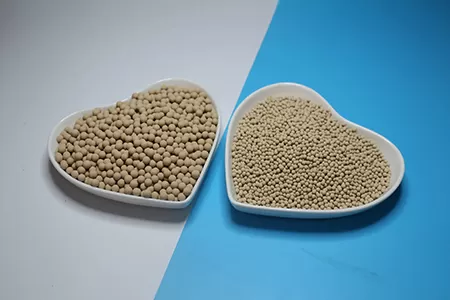3A molecular sieve shows minimal adsorption of formaldehyde due to size constraints. Formaldehyde molecules have a kinetic diameter of approximately 3.7 angstroms, which exceeds the 3-angstrom pore size of the sieve, creating a physical barrier that prevents most molecules from entering its porous structure. This limits the sieve’s capacity to trap formaldehyde, even though formaldehyde is polar—a trait that might otherwise encourage adsorption.

In practical applications, such as air purification, 3A molecular sieve packing fails to effectively reduce formaldehyde levels. Instead, it primarily adsorbs smaller polar molecules like water vapor, leaving formaldehyde largely unprocessed. This contrasts with larger-pore sieves (e.g., 4A or 13X), which have pores sufficient to accommodate formaldehyde and thus exhibit better adsorption performance.
The limited interaction between 3A molecular sieve and formaldehyde is further reinforced by the sieve’s strong affinity for water, which competes for any potential adsorption sites. Even in high-concentration formaldehyde environments, the sieve’s adsorption efficiency remains low, making it unsuitable for formaldehyde removal. Its role is instead reserved for applications requiring selective drying, where its size-exclusion properties are advantageous.

